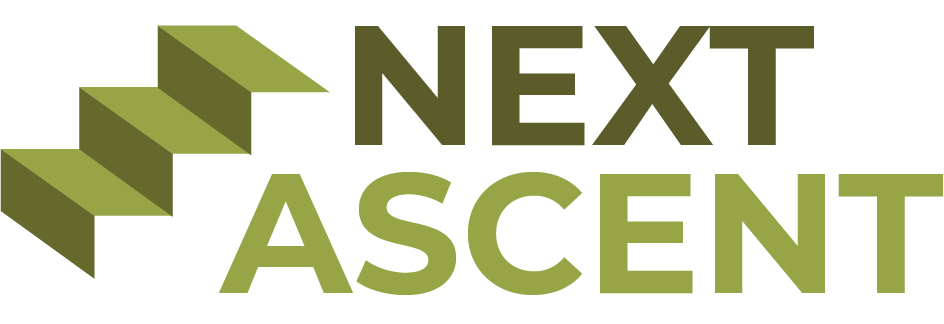
Pivoting to Greater Impact
How Nonprofit Fundraisers Are Navigating Challenges in a Shifting Political and Economic Landscape
In today’s changing political and economic climate, nonprofit leaders and board members are facing challenges: cuts in federal funding, rising costs, more people needing help, and fewer donors. But these challenges don’t mean we can’t make a positive impact. In fact, they give us a chance to rethink how we fundraise and build stronger, more sustainable strategies for the future.
So, how can we rise to these challenges and keep our missions alive? It’s about being flexible, transparent, and focused on building strong relationships to live in stronger, appreciative, more resilient communities. Here’s how to do that:
1. Start from a Place of Strength
First, reflect on your organization’s and individual strengths to give you renewed energy and a more positive mindset! For example, you have a network of supporters and partners who trust you. You have a dedicated team delivering crucial programming. You have a community of participants committed to improving their own lives. These relationships are strong and powerful. Think about your key contacts—board members, loyal donors, volunteers, and partners—and ask them to help you expand your network.
Action Tip: Track your important connections and reflect on how you’ve built trust with them. Reach out to 2-5 key supporters each week and update them on your work. Be specific in asking for their help, such as requesting introductions to potential partners or donors.
2. Foster Community and Relationship Building
Fundraising is about more than just asking for money—it’s about building genuine, appreciative relationships with people to help them mobilize their resources. Donors and volunteers want to feel personally connected to the work, and that requires regular, honest communication and the invitation to be engaged with your community.
This also applies to foundations and corporate partners. Take time to understand their goals and decision-making process and let them get to know your organization better.
Action Tip: Set specific goals for relationship-building, such as reaching out to X number of key supporters or potential donors each week or month. These small, measurable steps will keep your network strong and engaged. During conversation, share impact reports, ask how they want to get involved, and listen to what they value. To connect with small groups of supporters, co-host virtual discussions with a board member or program officer.
3. Find Different Ways to Raise Money
Relying on just one source of funding can be risky, especially when government policies are unpredictable. Instead, nonprofits can look for new ways to fundraise, like individual donations, corporate partnerships, informal gatherings, major gifts, and online campaigns.
Action Tip: Build strong relationships with small and mid-sized donors, volunteers, and local funders. Strategically engage them in your mission and show them how their support creates meaningful change. Then, ask them for a contribution—after all, one of the main reasons people don’t give is because they were never asked.
Mary Herbenick, Executive Director of Guilford Nonprofit Consortium, shared that, “since January 2025 we have received an unprecedented number of calls from people seeking to help their community and volunteer. They need direction about where and how.” You can help channel that energy for good and build relationships.
4. Invest in Storytelling to Inspire Giving
People connect with stories, not just numbers. Share the stories that show the real impact of the work.
Action Tip: Co-create videos, blog posts, and social media content in collaboration with the people your organization serves and join them in celebrating how their lives have improved. Authentic stories inspire donors to give. If possible, work with outside experts to help tell your story in a compelling way.
5. Self-Care is Not a Luxury—It’s a Necessity
As a nonprofit leader, you pour a lot of energy into your work. But constantly juggling responsibilities, especially during tough times, can lead to burnout. The emotional toll of advocating for others while juggling the complexities of fundraising can sometimes leave fundraisers feeling fearful or even hopeless. It’s important to take care of yourself so you can continue to lead and inspire others.
Action Tip: In collaboration with your team and board members, prioritize what matters most and don’t be afraid to say not yet when necessary. Refer to your strategic plan to help focus on what truly matters and guide your next steps. Celebrate wins—whether it’s through donor stories, program outcomes, or hitting key milestones. Reflecting on progress and remembering the context in the big picture will help keep you motivated.
6. Be Adaptable and Transparent in Challenging Times
When times are tough, flexibility and openness are essential. Be clear with your donors about the financial and programmatic needs, challenges, and opportunities you face and how their support is making a difference.
Action Tip: Openly share about how changes in funding are impacting your nonprofit. Show how the time, talent and treasures from your team, participants, and donors is helping you adjust and keep your mission moving forward.
Action Tip Part Two: Encourage open conversations with your team, board, and donors. Share details about your “core mission support” and the real costs behind your programs. This transparency builds trust and understanding.*
7. Advocate for Mission-Centered and Mutually Beneficial Partnerships
Building cross-sector partnerships with businesses, local governments, and other organizations can help expand your reach and strengthen your nonprofit’s sustainability. When you align with partners who share your values, you can create long-lasting, impactful collaborations
Action Tip: Getting board members and teammates involved in building partnerships with businesses and local leaders can help nonprofits grow and get more support. Together you can explore opportunities for joint initiatives, co-branded campaigns, sponsorship, or matched giving programs. Set a target for the number of conversations or collaborations you want to establish each quarter. This can help focus efforts and measure the success of your outreach.
Jodee Ruppel, Executive Director of NC Folk Festival, explains, “By showing the positive economic impact of our festival, we built a partnership with the City of Greensboro that benefits both the festival and the community.”
8. Use Data to Make Smarter Decisions
Using data to make decisions is key. By looking at your supporters giving trends and volunteer participation, you can focus your efforts where they will have the biggest impact.
Action Tip: Use data management tools like a database or spreadsheet (hopefully not just your memory or sticky notes) to track giving patterns and participation and set clear goals. With this data, segment your donor list, and create appeals based on their past giving history and shared characteristics. Personalize your appeals by providing each donor’s recent giving history. Aim to grow event participation by a specific percentage over the next year.
9. Embrace Digital Fundraising
With many donors preferring to engage online, digital fundraising is more important than ever. Use social media, crowdfunding platforms, and peer-to-peer fundraising to increase your reach.
Action Tip: Invest in an easy-to-use donation platform that works well on mobile devices. Use social media to share your mission, highlight your successes, and keep donors informed.
10. Focus on Long-Term Impact
It’s easy to get caught up in immediate needs, but nonprofits that think about their long-term vision are more likely to thrive. Help your supporters see that their contributions are part of a bigger movement for social change.
Action Tip: Even when facing challenges, communicate the long-term goals of your work. Show donors how their ongoing support will contribute to lasting change.
Conclusion
While the political and economic climate may present challenges, it also offers an opportunity to rethink how we fundraise. By starting from a place of strength, diversifying funding sources, embracing tools, building strong relationships, and staying flexible, nonprofits can adapt and continue to create meaningful change. Now is the time to focus on your mission, leverage your strengths, and think creatively about the future.
Together, we can build stronger, appreciative, more resilient communities.
Need help working through the next steps? Give us a call.
*Reference Curtis Klotz, CPA August 2, 2016, https://propelnonprofits.org/blog/a-graphic-re-visioning-of-nonprofit-overhead/
